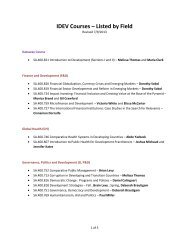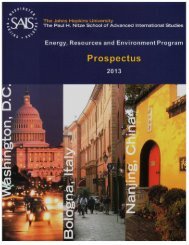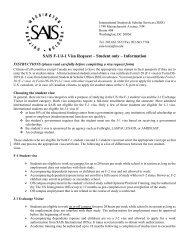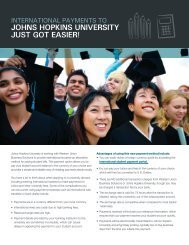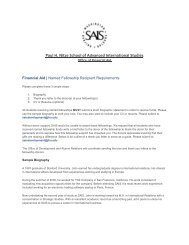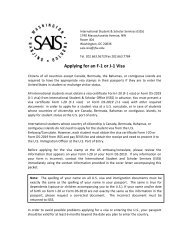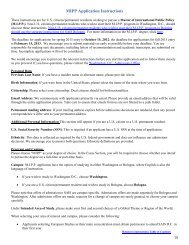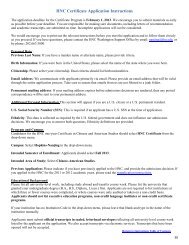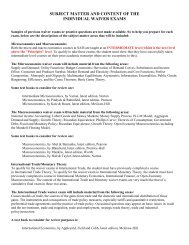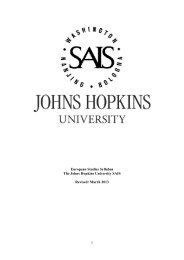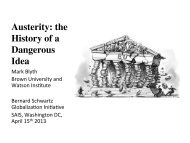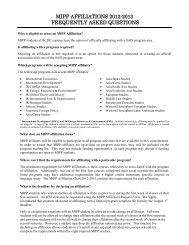Tunisia: Understanding Conflict 2012 - Johns Hopkins School of ...
Tunisia: Understanding Conflict 2012 - Johns Hopkins School of ...
Tunisia: Understanding Conflict 2012 - Johns Hopkins School of ...
Create successful ePaper yourself
Turn your PDF publications into a flip-book with our unique Google optimized e-Paper software.
limited to <strong>Tunisia</strong>, these vivid depictions <strong>of</strong> the crackdown in <strong>Tunisia</strong> were available for<br />
the world to see and for the world to take notice, and they did.<br />
Another important factor in the flow <strong>of</strong> information surrounding the revolution<br />
was the access to satellite television throughout <strong>Tunisia</strong>. The aforementioned flow <strong>of</strong><br />
information beyond the borders <strong>of</strong> <strong>Tunisia</strong> created a feed-back loop where information<br />
from Facebook—pictures, video, and stories from bloggers, activists, and ordinary<br />
citizens—was picked up by international news outlets, like Al Jazeera and TV24<br />
broadcasting out <strong>of</strong> France. As these news outlets collected information from social<br />
media and began to broadcast this content, not only did an increasing number <strong>of</strong> people<br />
around the world take notice <strong>of</strong> what was happening but also did the people within<br />
<strong>Tunisia</strong>, from Sidi Bouzid to Sidi Bou Said, who, with access to satellite television in<br />
their homes or in cafes saw the crackdown in vivid detail. The uprising was now<br />
garnering internal and external attention and the crumbling regime was powerless to<br />
arrest the spread <strong>of</strong> this damning information. The powerful combination <strong>of</strong> Facebook<br />
and satellite television broadcasts allowed a freer flow <strong>of</strong> information, both within<br />
<strong>Tunisia</strong> and to the broader international public, and created the aforementioned feed-back<br />
loop that allowed for the revolution to gain the critical mass necessary to overthrow the<br />
Ben Ali regime.<br />
Unemployment and Poverty<br />
Unemployment and poverty are common issues in the developing world and <strong>Tunisia</strong> is no<br />
different. However, the nature <strong>of</strong> unemployment within <strong>Tunisia</strong> grew into one <strong>of</strong> the<br />
acute factors that led to the start <strong>of</strong> the revolution. Unanimously considered a revolution<br />
finding its genesis in the youth <strong>of</strong> <strong>Tunisia</strong>, unemployment amongst the youth became a<br />
major fuel for the fire <strong>of</strong> revolution. Hampered by the broader international financial<br />
crisis as well as structural issues, the <strong>Tunisia</strong>n economy was hurting. In 2010<br />
unemployment continued to climb and one <strong>of</strong> the hardest hit portions <strong>of</strong> the work force<br />
was the youth. Eight hundred thousand unemployed out <strong>of</strong> a population <strong>of</strong> 10 million,<br />
with what is considered a highly educated workforce, simply became unacceptable.<br />
Furthermore, approximately 200,000 <strong>of</strong> these unemployed were youth holding university<br />
9



